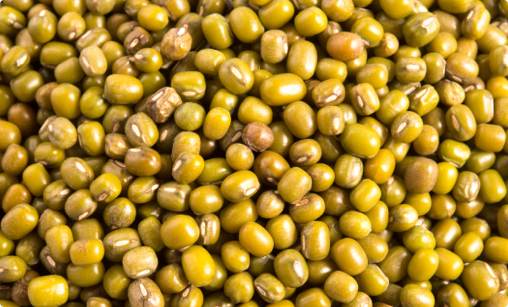Mung bean (Vigna radiata (L.) R. Wilczek) is an important food and cash crop in the rice-based farming systems of South and Southeast Asia. It is a legume cultivated for its edible seeds and sprouts, and also as animal feed. Alternative spellings include mungbean and moong bean, and it is also called green gram There are 3 subgroups of Vigna radiata: one is cultivated (Vigna radiata subsp. radiata), and two are wild (Vigna radiata subsp.sublobata and Vigna radiata subsp. glabra).
spellings include mungbean and moong bean, and it is also called green gram There are 3 subgroups of Vigna radiata: one is cultivated (Vigna radiata subsp. radiata), and two are wild (Vigna radiata subsp.sublobata and Vigna radiata subsp. glabra).
Mung bean (Vigna radiata) used to be known as Phaseolus aureus Roxb. before many Phaseolus species were moved to the Vigna genus (Lambrides, C. J. ; Godwin, I. D., 2006. Mungbean. In: Chittarajan, K.,Genome Mapping and Molecular Breeding in Plants, 3: 69-90). Mung bean, Vigna radiata, is a different species from Vigna mungo, which is usually called black gram or urdbean.
Short crop duration, low input requirements and high global demand make mungbean an ideal rotation crop for smallholder farmers. It generates a triple benefit: additional income, additional nutrient-rich food, and increased soil fertility. However, investment in mungbean variety improvement has been low, leading to a narrow genetic base for the crop. Consequently, current mungbean varieties lack key traits to cope with emerging pests, diseases and seasonal variability, which constrains production.
